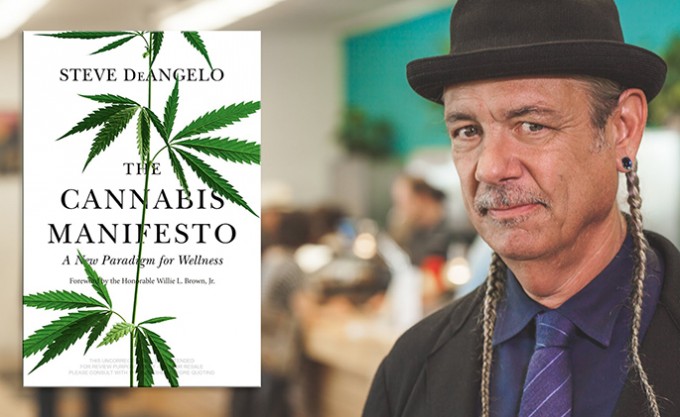Nursing Book Club
The Cannabis Manifesto: A New Paradigm for Wellness by Steve Deangelo
Making the case, not always persuasively, for the wellness benefits of marijuana

With California legalizing the retail sale of recreational marijuana as of Jan. 1, 2018, I decided it was high time for me to learn more about the medical use of cannabis, which has been legal in California since late 1996. I must admit that I don’t know much about medical marijuana, so I picked up The Cannabis Manifesto at my local bookstore.
The presence of the word “wellness” in the subtitle of this book (published more than a year before Prop. 64 legalized adult recreational use of marijuana in California) was unexpected, but vaguely reassuring, suggesting images of good health.
According to the book jacket, author Steve DeAngelo is director of Harborside Health Center in Oakland, which describes itself as the world’s largest medical marijuana dispensary. He is also the star of the Discovery Channel’s “Weed Wars.” Since DeAngelo is an outspoken advocate for the therapeutic use of marijuana, it seemed like he might have something valuable to say. After reading his book, I was left with mixed feelings.
Therapeutic Benefits
The author explains that cannabis has been used medicinally by the Chinese for something like 5,000 years, with Chinese texts describing it as one of the 50 “fundamental herbs,” useful in the treatment of 120 different conditions. (A 2015 Medscape article cites pharmaceutical references to cannabis in other cultures dating back to about 2,000 B.C.)
The therapeutic benefits of cannabis lie in chemical compounds called cannabinoids. There are about 85 different cannabinoids, which have a range of effects depending on their strength and combination. They affect the receptors that control how our bodies metabolize neurotransmitters known as endocannabinoids, which help to regulate different neural and metabolic functions.


